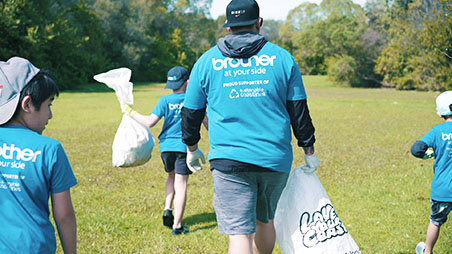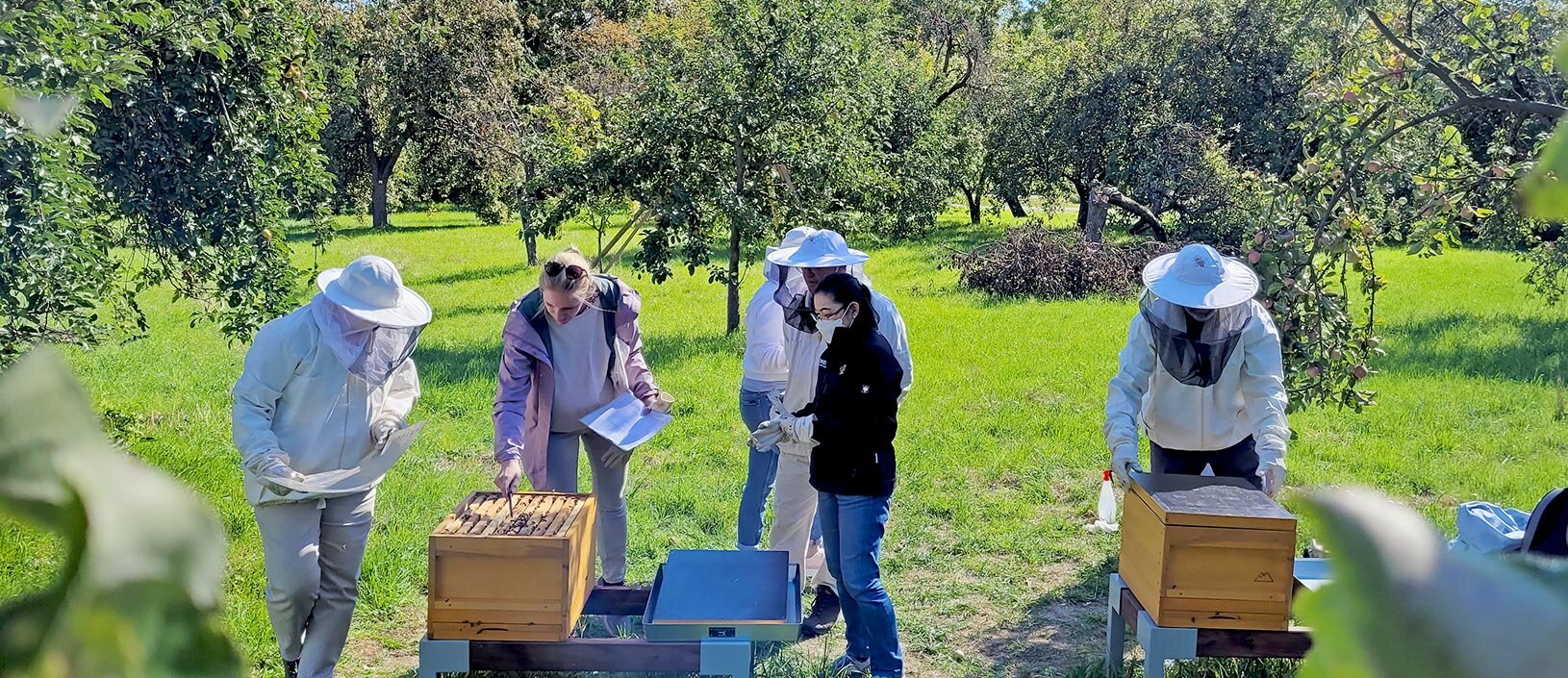

Better your earth.
Creating a Sustainable Society with Honeybees
Protecting local biodiversity and cultural landscape through beekeeping
Honeybees play a vital role in maintaining biodiversity and for agriculture as the most important pollinators. In addition to maintaining and promoting the restoration of forest ecosystems, they contribute to the sustainable production of more than 75 percent of the world's food crops, including strawberries, almonds, and coffee. However in recent years, their populations have declined around the world due to the effects of pesticides, pest diseases, and climate change, with 40 percent of honeybees and butterflies in particular facing extinction.
In response to this situation, Brother International GmbH (Germany) and Brother Sewing Machines Europe GmbH (Germany) work with the assistance of a local beekeeper to maintain and care for bee colonies throughout the year.
A project that shares social responsibility for the local communities blessed with a rich natural environment
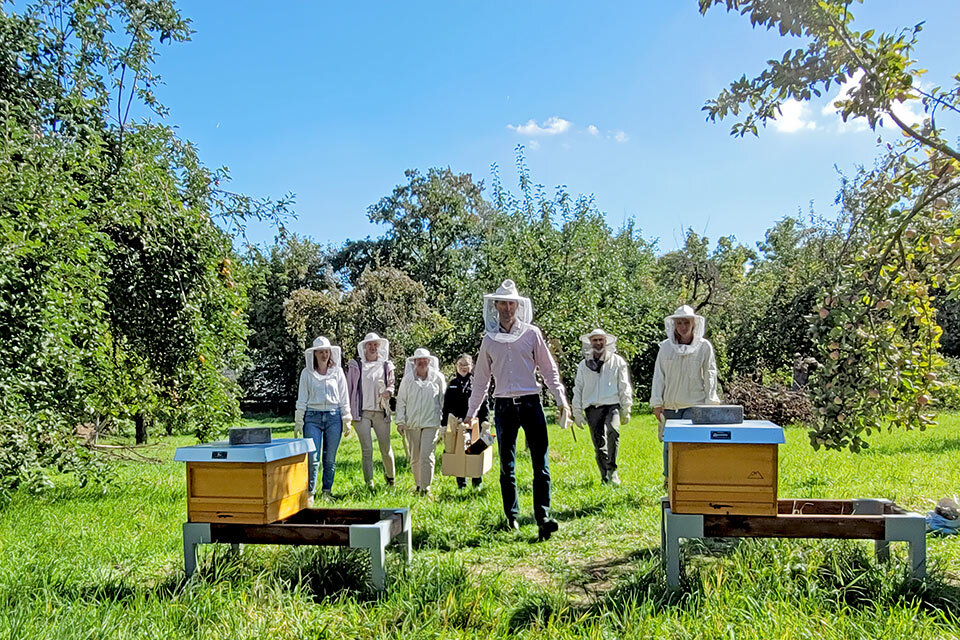
The city of Bad Vilbel, where Brother International GmbH is located, is a naturally rich area adjacent to Frankfurt. It has meadows where wildflowers grow and apple orchards for the local specialty drink, Apfelwein similar to cider. These areas serve as a biotope that provides a habitat for many living creatures such as rabbits, pheasants, tiny owls, small rodents and singing birds. They also historically constitute a cultural landscape and are national heritage sites. Brother International GmbH has traditionally engaged in cleaning activities along the banks of the Nidda River, which runs through the city, to preserve the local ecosystem. Based on the basic policies outlined in the Brother Group Global Charter, containing “sharing our social, economic and cultural resources in all the communities,” Brother International GmbH has started the beekeeping project Bee My Brother as an ecosystem conservation activity that also contributes to the local communities.
The beginning of the beekeeping project
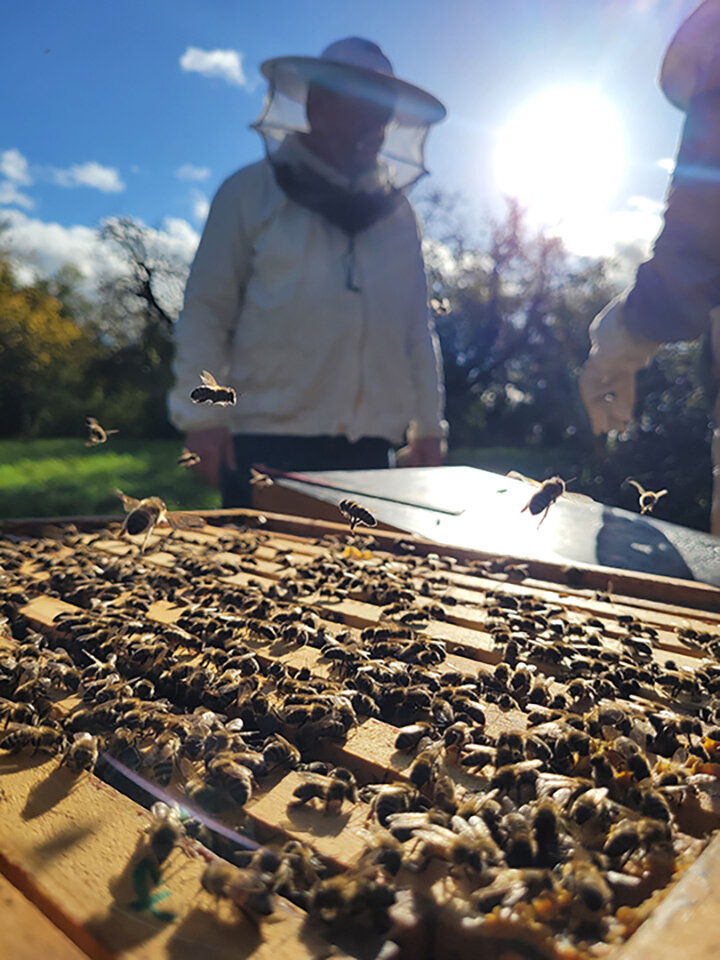
The reason that beekeeping was chosen from the many options available is because of the similarities between employees and honeybees. Both are hardworking, organized and social, and contribute to society. Honeybees are a symbol of diligent and persistent work. They are social creatures that work as teams within a colony to build Honeycombs, collect nectar, and raise their young, while also contributing to the surrounding ecosystem as pollinators, which is something we could empathize with as employees of Brother. Beekeeping is the perfect way to contribute to the local communities while living in harmony with them.
One employee in behalf of Brother International GmbH and Brother Sewing Machines Europe GmbH first joined the local beekeepers' association to participate from the knowledge exchange of all beekeepers and to gain a beekeeper liability insurance which is essential for beekeepers to ensure social responsibility. With the help and expertise of a local beekeeper, Brother International GmbH set up two beehives in the orchard adjacent to their offices in 2022. They started raising honeybees within sight of their offices.
Beekeeping translates to employee growth and environmental communication
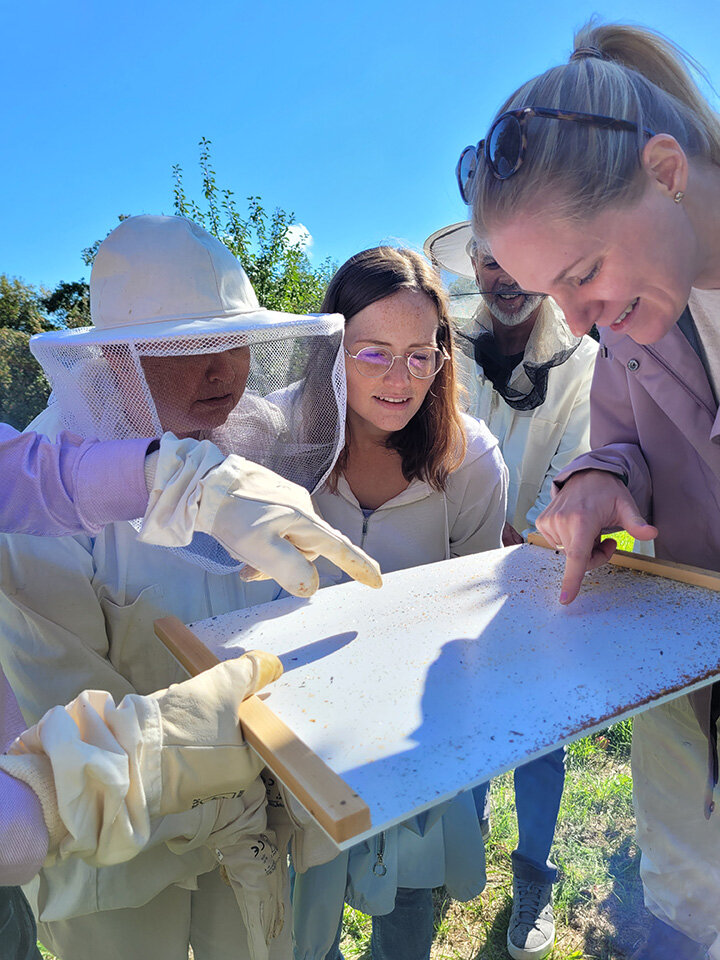
Bee my Brother team members are checking amount of varroa mites in a beehive
Currently, as of November 2024, 11 employees are involved, caring for up to 50,000 bees per hive in the summer and 20,000 in the winter during their lunch break every Wednesday. The participants learn all the tasks involved in beekeeping and honey harvesting throughout the year. Beekeeping requires regular checks and protection from pests and diseases. The tasks are to see if there are any abnormalities with the colony (bee group) inside the beehive and if there are any problems with the queen bee or her egg-laying. The Bee my Brother team members have to learn to check their bee colonies if there are infested with dangerous varroa mites. The participants always pay close attention to the local ecosystem and share the knowledge they have gained from beekeeping with other employees and the local communities via social media, thereby expanding environmental communication.
Honey produced by bees is also used in environmental communication
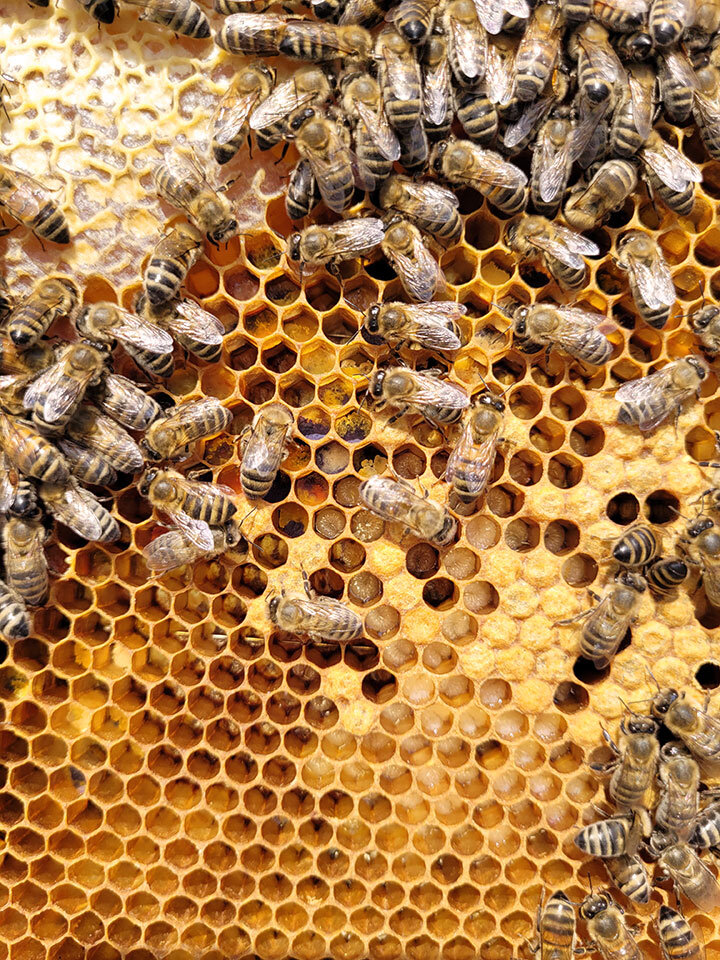
Honey bees on honeycomb cells with larvae and sealed honey food wreath on the right side
Beekeeping is said to have the effect of reducing CO2 emissions by 60 tons per year per colony because honeybees promote the growth of plants that undergo photosynthesis, and it also produces high-quality honey as a by-product. Harvesting takes place twice a year, in the spring and summer, with no harvesting in autumn or winter to prioritize the protection of the honeybees. The honey harvested each year, totaling around approximately up to 40 kg, is treated as a gift from nature and is put to good use for internal environmental education and environmental communication both inside and outside the Company. Moreover, small jars of honey were also gifted to business partners with sustainability certificates. At Brother International GmbH, each employee is promoting this sustainable project to customers and business partners, thereby deeply connecting with the local communities and contributing to the conservation of local biodiversity and cultural landscapes.
SDG 13, “climate action,” calls for urgent action to mitigate climate change and its impacts. In addition, SDG 15, “life on land,” includes a target aimed at conservation and sustainable use of terrestrial ecosystems, which sets out “ensure the conservation, restoration and sustainable use of terrestrial and inland freshwater ecosystems and their services, in particular forests” (15.1). Brother's beekeeping promotes plant growth, thereby contributing to the reduction of CO2 emissions, which have a significant impact on global warming, while also preserving the terrestrial ecosystem services of local communities and supporting their sustainable use.

Share this article on social media

Learn about this initiative's SDGs
In ”SDGs at a Glance,” the 17 goals of the SDGs are explained in easy-to-understand illustrations. Click on the goal you are interested in, and you can read about it in under a minute. Let's take a look at the SDG goals featured in this article.
Related Topics
















